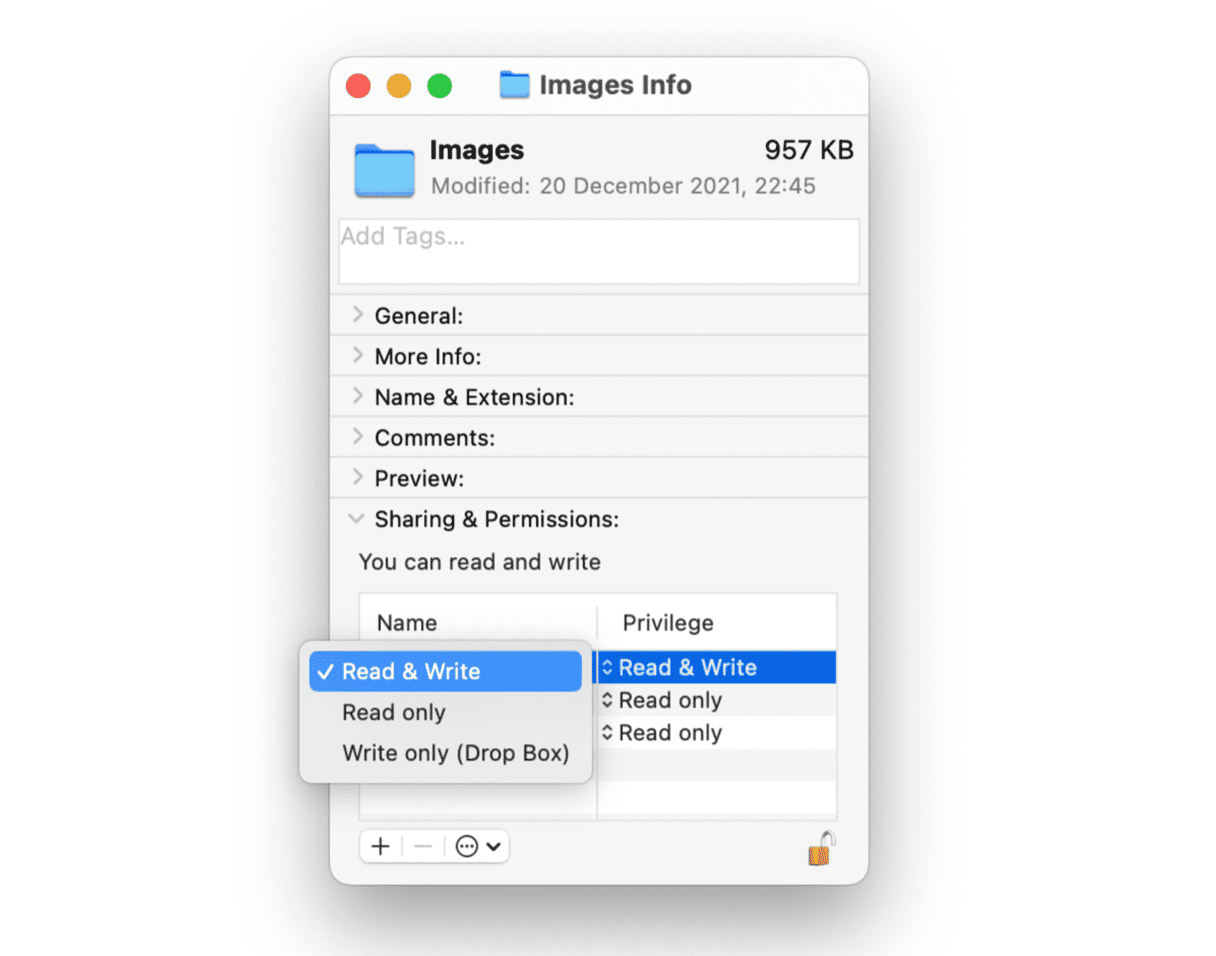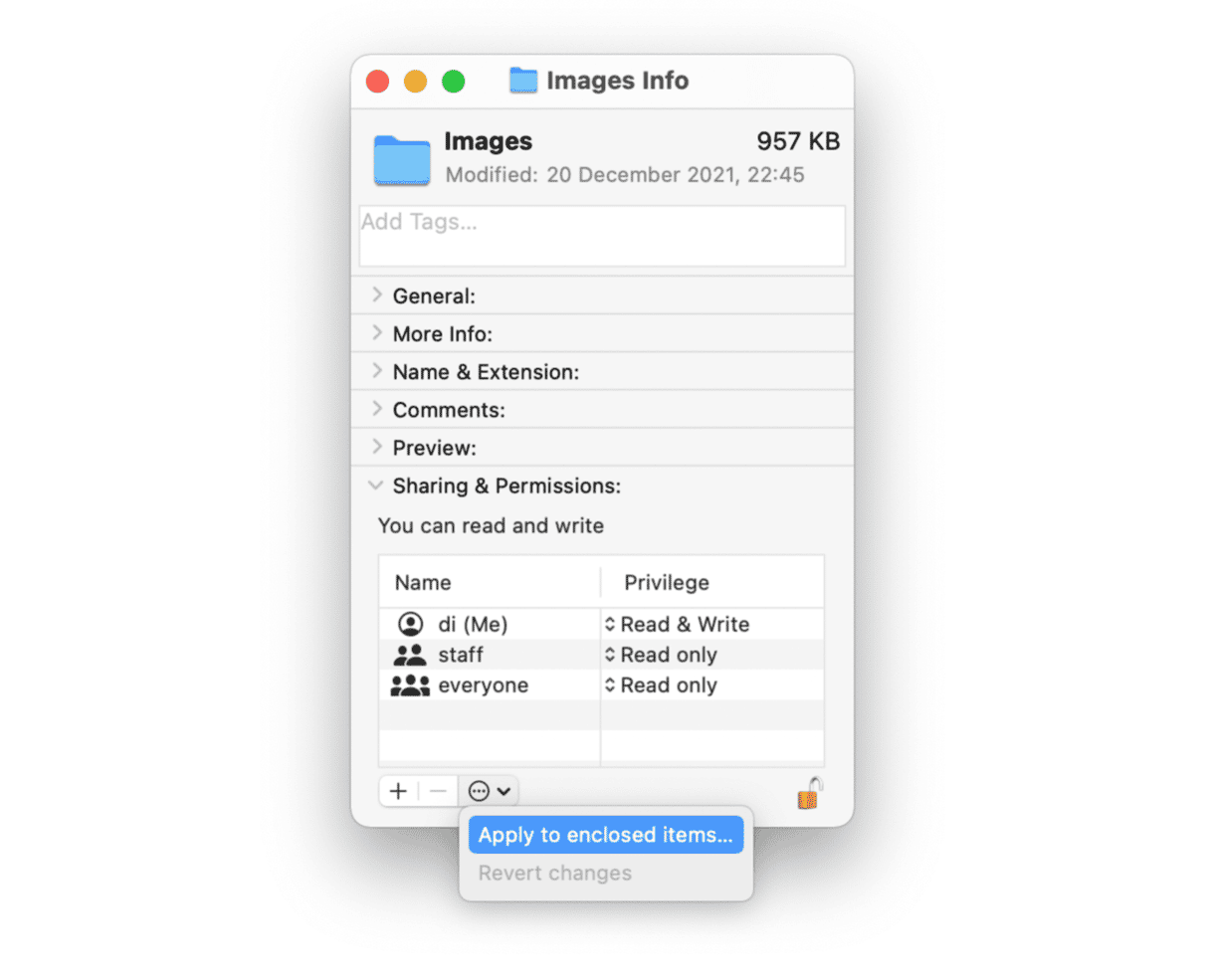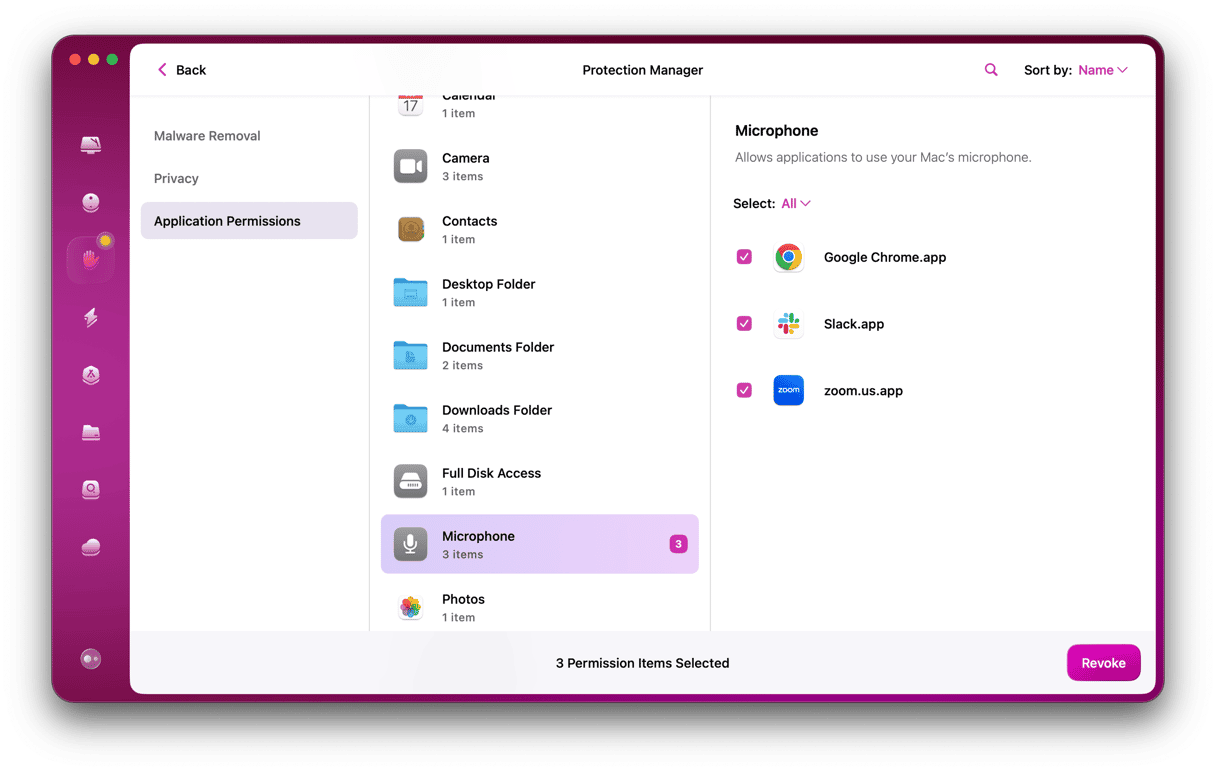Every file and folder on your Mac has a set of permissions. Those determine which user is allowed to view and modify data on your computer. If you wish to restrict access to some of your files, you can easily do that by changing permissions.
In this article, we’ll show you how to view, change and control file or apps permissions on your Mac. Let’s get started!
What permission types are there on Mac?
There are several types of permissions users can have on macOS:
- Read only — allows a user to open files without making any changes.
- Write only — turns a folder into a drop box. A user is allowed to copy items to the drop box, but not open it. Only the drop box owner can open it.
- Read & Write — allows a user to open and change files.
- No Access — blocks access to files entirely.
How to view file permissions
Users can view file permissions using the Finder info window. In Finder, right-click the file or folder and choose Get Info from the menu or press Command + I to open this window. Click the Sharing & Permissions triangle to see the item permissions.

How to change permissions for files, folders, or disks
If you want to change current permissions for particular items, use the simple guides below to adjust permissions to your specific needs.
Assign permissions to users & groups
- On your Mac, choose a file or folder > right-click and select Get Info.
- Click Sharing & Permissions, then click the lock icon to unlock it.
- Enter the administrator name and password.
- Choose the user in the Name column and then choose Privilege setting from the pop-up menu.

Apply permissions to all files in a folder/disk
- Choose a folder or disk.
- Select File > Get Info.
- Click the lock icon to unlock it.
- Enter the administrator password.
- Click the Action pop-up menu and choose "Apply to enclosed items".

Change a file’s owner
- On your Mac, choose the file > Get Info
- Click the lock icon to unlock it and enter the administrator password.
- If the new owner’s name is not listed in the Name column under Sharing & Permissions, click the Add button to add the new owner.
- Choose the new owner in the Name column, click the Action pop-up menu, then choose "Make_the owner".

How to control application permissions
The latest macOS versions have quick security checks for apps. Applications have to request permission before accessing certain parts of your drive. For instance, if you open Skype for the first time, you’ll get a pop-up asking permission to access your camera & microphone.
You have two options to check what programs are allowed to use your webcam, microphone, files, and folders. The first one is via System Settings. The second — is specialized apps like CleanMyMac.
Change app permissions via System Settings
If you feel like someone is watching or listening to you, you can check what apps have access to your cam or mic. Here’s how to do that:
- Go to System Settings > Privacy & Security.
- Select Camera and switch on apps that are allowed to use your camera and switch off the rest.

Control app permissions effortlessly with CleanMyMac
If you don’t feel like setting up app permissions manually, there is an easier and faster way to manage them — CleanMyMac and its smart tool named “Application Permissions”. It allows you to view and manage all permissions in one place in under 60 seconds.

Here’s how it works:
- Start your free CleanMyMac trial.
- Install and open the app.
- Go to Protection and click Scan.
- Click Manage Privacy Items and choose Application Permissions.
- Check permissions and adjust them the way you want.
As simple as that!
Since you’ve already installed CleanMyMac, we recommend you try using other handy tools it has. Start with Smart Care — a single-click solution for checking your Mac for unneeded junk files and duplicates, viruses, outdated apps, and suitable speedup tasks.

That’s it! Now you know everything there is to know about permissions on your Mac. Adjust the settings to your personal needs to keep your personal data safe & sound!






